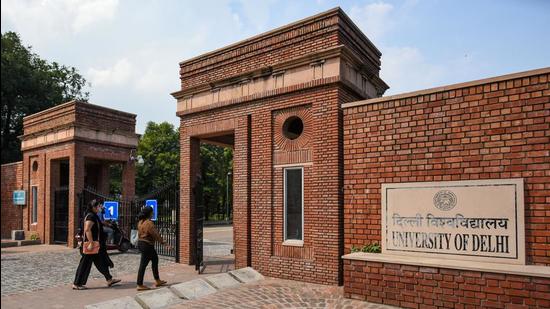DU’s absurd cutoffs reflect a systemic failure. Design better admission methods
For about 10 of the 94 courses in DU’s colleges, the cutoff in the first list this year was a perfect 100%.
For several years now, admissions for undergraduate courses at Delhi University (DU) have seen remarkable cutoffs. For about 10 of the 94 courses in DU’s colleges, the cutoff in the first list this year was a perfect 100%.

Now, approximately 550 Central Board of Secondary Education (CBSE) students scored these high percentages. Assuming that at least half of them are interested in pursuing engineering or medicine, or prefer an elite private university, or go to study abroad — and assuming that all these 94 courses have a minimum intake of 30 students each — a back-of-the-envelope calculation tells us that only 250 CBSE students would be eligible for admission to their preferred courses in the first list.
But data also shows more than 700 students from the Kerala Board of Higher Secondary Education have scored 100% in their class 12 exam. It is, therefore, not a surprise that DU courses, especially with the 100% cutoffs, are being filled with students from the Kerala board.
Take an example. This year, for the political science (Honours) course at Hindu College, students were required to have a perfect score of 100% in their board exam. Of the 106 applications received on day 1, about 35 general category students, 63 Other Backward Classes (OBCs) students, four Scheduled Caste students, and four Economically Weaker Section (EWS) students scored a perfect 100%. This, when the department has about 45 sanctioned seats. Of these students, all but one were from the Kerala board.
There have been concerns about the absurdly high cutoffs. However, these discussions often move in the direction of replacing the current system of admissions with a pan-India competitive examination. This, many reckon, can create a level-playing field for students from different boards.
What defenders of a national-level entrance examination do not realise is the unevenness of the nature and structure of secondary school education in the country. The disparities in the higher secondary curriculum, and the variations in pedagogies at the regional and local levels, coupled with pervasive economic and social inequalities, suggest that the disadvantages of such a system would outweigh the supposed advantages.
It runs the risk of allowing only the entry of students from elite schools and well-to-do families. It also runs the risk of getting gratuitously muddled into federal disputes, as has been evident in the case of the NEET examinations for entry into medical colleges. Most importantly, a common entrance test also undermines the right of premier colleges to design innovative ways of assessing the capabilities of prospective students according to their inherent strengths.
Therefore, the only way forward is to design methods and policies that ensure a level-playing field, reward merit, and promote diversity. The prevailing guidelines for admissions issued by DU mandate colleges to admit all students who make it to the cutoff within the stipulated time period. They also direct colleges to consider students from the reserved category as part of the general category in case they have the percentage declared for the general students. This year, the department of political science at Hindu College may have 150-plus students, as the department will have to exceed its sanctioned strength to accommodate the mandatory numbers from the reserved categories.
This is why admission policies must involve experts in policymaking and execution. A closer inspection of the applications received from students of the Kerala board revealed that while their average score was 90-95% in their Class 11 exam, they all had a perfect score in Class 12. DU’s admission policy only considers marks for the latter, notwithstanding the fact that many state boards declare aggregated results of class 11 and 12 as the final results. If policymakers had looked into past experiences, allowed certain rational filters such as scaling or the need to obtain or arrive at equivalences between results of different boards by designing algorithms for the same, some of its most prestigious colleges and courses would have successfully been able to accommodate a diverse set of students.
Chandrachur Singh is an associate professor of political science at Hindu College, Delhi University
The views expressed are personal
Continue reading with HT Premium Subscription




